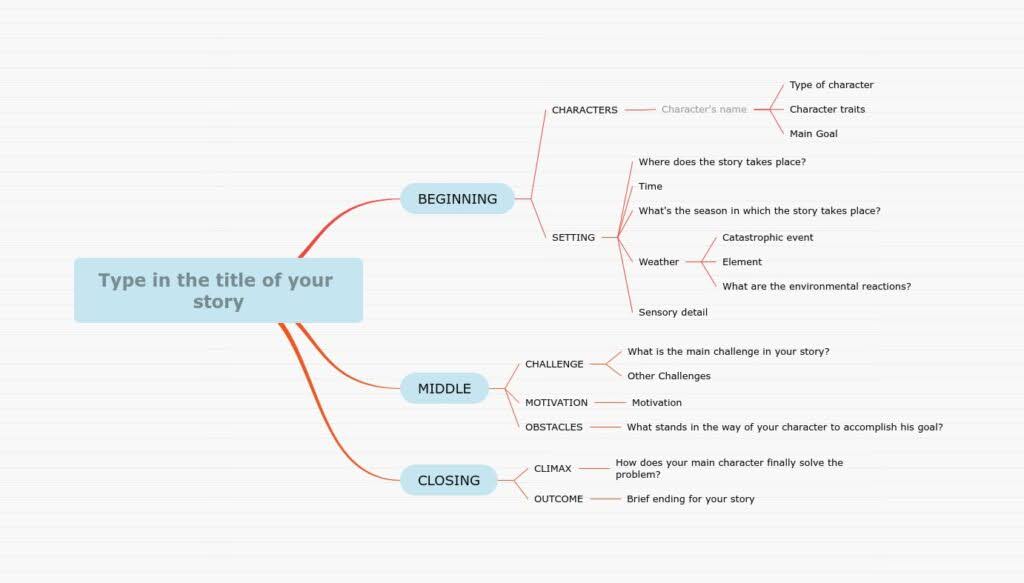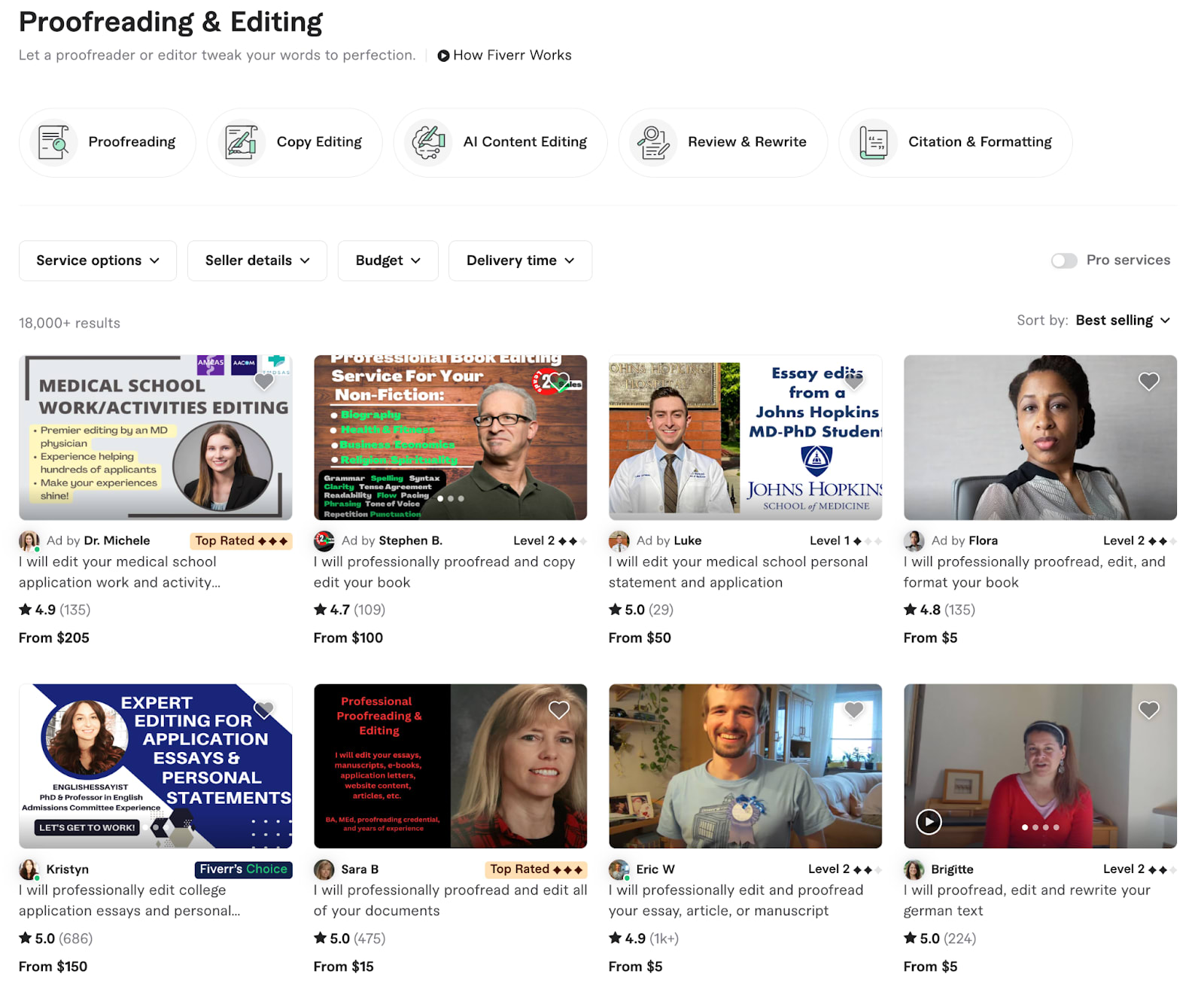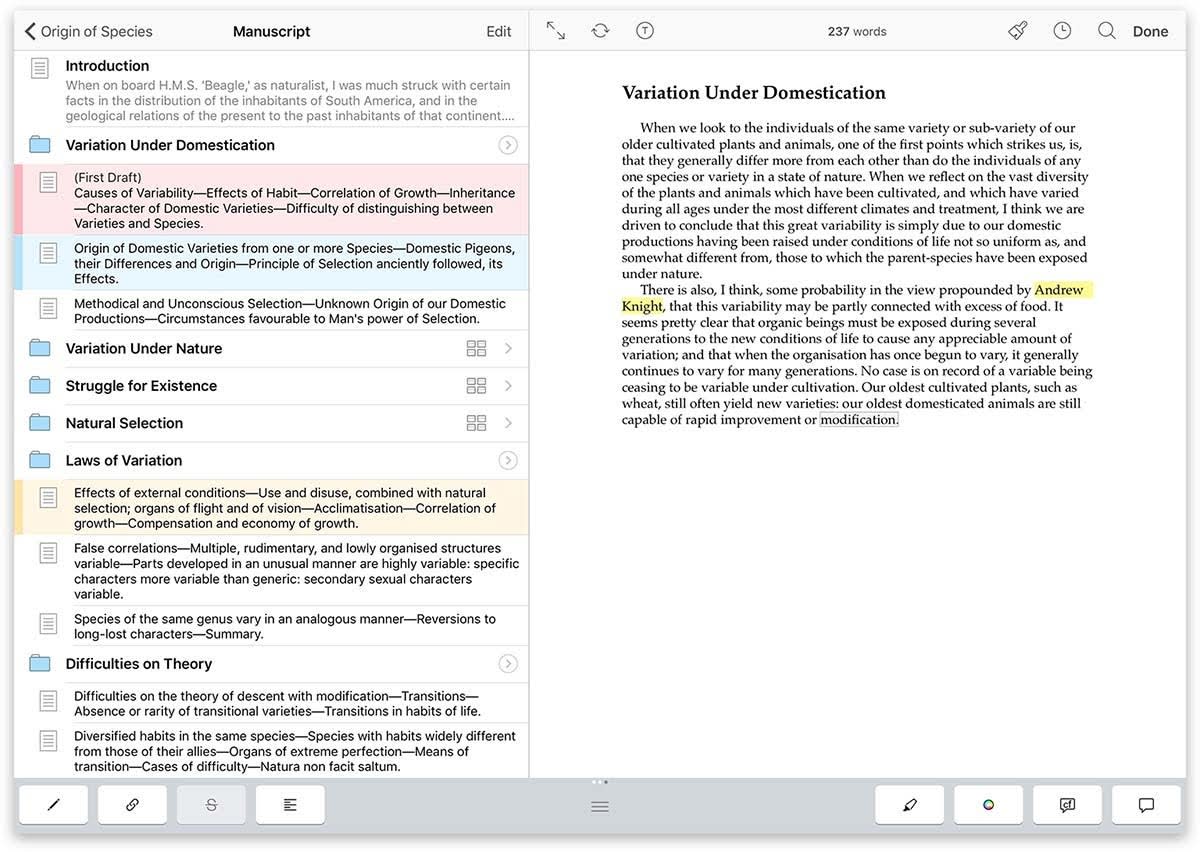How to Write a Book in 9 Steps
Learn how to write and publish your first book with our comprehensive guide. From developing ideas to marketing your finished work, we cover every step of the process.
 August 19, 2024
August 19, 2024 8 minute reading
8 minute reading
Picture this. You're sitting amid a crowd with hordes of readers queueing to have their book signed by their beloved author—YOU. This is a dream many aspiring writers share.
If you're one of them, then you're in the right place.
This guide will walk you through the many steps of book writing, from brainstorming and writing to editing and publishing. Each step is broken down so you don't feel overwhelmed, and practical tips and resources are shared to get you on the next bestseller's list.
Prep yourself by developing a writer’s mindset
As writers, we all wish to become bestselling authors. However, this rarely happens overnight.
While a few achieve success right off the bat, many more have had to overcome challenges before gaining recognition. So before we get on with the nitty-gritty of writing and publishing a book, let's talk about developing a writer's mindset.
What is a writer’s mindset? Basically, it’s a way of thinking or outlook that helps writers stay focused and motivated throughout the writing process.
Start off doing the following:
Believe in yourself. We all have periods of self-doubt, but it’s essential not to wallow in them too long. Don’t doubt yourself even in times when progress seems slow. Instead, start believing more in your abilities.
Balance discipline and flexibility. Sure, you can use AI tools now to instantly write stories, but writing a GOOD book takes time. Discipline helps you stick to your writing goals and follow your timeline. But it also requires some flexibility to adapt your schedule when a real-life plot twist happens.
Embrace feedback—both good and bad. Having a writer's mindset means being open to feedback. Don't take criticisms personally. Instead, consider every piece of advice as a learning opportunity to improve your writing skills.
Practice self-care. Writing is cerebral. It can be mentally and physically taxing. Remember that you need both a healthy body and mind to sustain creativity and productivity until you finish your book. Aim to have a balanced lifestyle and manage stress well.
Choosing between traditional publishing and self-publishing
After editing and polishing your manuscript, the next step is sharing it with the world. There are two main ways to do this: traditional publishing and self-publishing.
With traditional publishing, you’ll need to find an agent and a publisher. The publisher handles all processes and covers all costs from editing to distribution—but only after they’ve reviewed your manuscript and deemed it acceptable for publishing.
On the other hand, self-publishing puts you in charge of the entire publishing process. It requires more legwork but gives you full control over the publication of your book. You can choose the editors, designers, and selling platforms (like Amazon) yourself. While you have to shoulder all the costs, you get a larger chunk of the royalties and book sales.
If you’re leaning toward self-publishing, check out this handy guide on how to self-publish a book in 7 easy steps.
How to write a book from start to finish
Now that you’re all set with a winning attitude brimming with positivity, it’s time to write that book. Here are the nine steps to take.
1. Find your book idea, niche, and target readers
Writing a book starts with an idea. But if a million ideas are floating in your head, choosing which one would work can be challenging. So, narrow it down to topics that you know well and love.
What excites you? What can you talk about for hours on end? Discover a unique and engaging idea for your book that aligns with your passions and interests. Make your book reflect a piece of you. Dig deep and find that spark.
But then, also take note that you’re writing for an audience, not just yourself. You want your book to connect with your audience—something that stirs their emotions. To do this, you must understand who your target readers are.
Some questions to consider:
Who will be reading your book?
Are they children, teens, young adults, or mature audiences?
What’s their level of education?
What are they interested in?
Do they like fiction or non-fiction?
Which genre are they most interested in?
Be careful not to overthink, though. Often, the best ideas are just around us. When asked where she gets her ideas, Jennifer Weiner, author of Good in Bed and In Her Shoes, says on her website, “Many of my ideas spring from my day-to-day life, and then get exaggerated, embellished and sharpened… they get made more fake and, hence, feel more real.”
2. Outline your book
Want to achieve literary success? Prep a detailed outline—your roadmap to a published book that gets snatched off the shelves by eager readers. A well-prepared outline helps organize your thoughts and ensures your story flows logically.

A mind map template. Self Publishing Advice
Unsure how to create an outline? Here are some tactics you can try:
Mind map. If you love doodling, you’ll love mind mapping. It’s like doodling with a purpose. Start with your main idea, then branch out as your ideas flow.
Use index cards. Have a ton of ideas but can’t organize them? Use index cards to visualize the bigger picture and rearrange your scenes for a more interesting story flow. Write key points or scenes on index cards and lay them out on the table or floor. This is old school but can be fun to do.
Create a skeleton outline. A skeleton outline provides more structure than a mind map and index cards. It allows you to refine and add new ideas when they pop up. Draft a basic framework of your chapters and main points, then flesh it out as you go along.
Simplify with a three-act structure. This outlining method is perfect for fiction. Divide your story into the setup (intro), confrontation (rising action), and resolution (climax or end).
3. Create a writing schedule and set goals
It’s time to get disciplined. Develop a realistic writing schedule that fits your lifestyle. Set achievable goals, like writing for 30 minutes daily or completing a chapter weekly.
Rick Riordan, author of the bestselling Percy Jackson series, advises aspiring writers to, “write every day! Keep a journal. Jot down interesting stories you heard. Write descriptions of people you see. It doesn't really matter what you write, but you must keep up practice. Writing is like a sport—you only get better if you practice. If you don't keep at it, the writing muscles atrophy.”
Be consistent with your daily writing. And remember, every word you write brings you one step closer to finishing your book.
4. Craft compelling characters and plotlines
If you’re writing fiction, this is where the magic happens. Your characters should be multi-dimensional, with strengths, flaws, and motivations. Think about their backgrounds, quirks, and how they interact with each other.
Create character profiles that are as detailed as possible. You don’t necessarily have to share everything if they have no part in the story, but these intricate details help you figure out the characters’ personas and their development throughout your book.
Bring characters to life with a fictional profile. You can create a simple template in Google Docs or Microsoft Word and fill in the details.
Consider including the following details:
Character’s name, age, gender, status, and race or nationality
Physical appearance and how the character feels about it
Physical, emotional, or mental disabilities and their effect on the character’s life
Personality traits and how they affect interactions with other characters
Educational, work, or professional background
For plotlines, create twists and turns that keep your readers hooked. Don’t be afraid to surprise them. However, avoid overly complicated plot twists that confuse readers. Keep their interest high with chapter enders that leave them at the edge of their seat, eager to find the answers to questions and excited to read the next chapter.
5. Conduct research and organize information
For non-fiction writers, research is your best friend. Fortunately, you can do all the leg work via the internet nowadays. Scour through troves of online resources. Listen to podcasts, audiobooks, and interviews with experts.
Many non-fiction books require factual accuracy so base your research on scholarly articles, academic journals, data records, and industry insights. Archives, newspaper clippings, and historical journals are also great for confirming content with a historical basis.
For fiction writers, research can add depth, authenticity, and richness to your storytelling. Whether you're writing historical fiction, science fiction, or contemporary novels, researching relevant topics can help you create more believable worlds, characters, and plot points. This might involve studying specific time periods, cultures, scientific concepts, or even professions to ensure your fictional elements are grounded in reality.
Gather all the information you need and organize it systematically. Use tools like spreadsheets, digital note apps, or good old-fashioned notebooks. Make sure your facts are accurate and your sources are credible.
6. Write your first draft
You're sitting at your desk, fingers hovering over the keyboard, ready to embark on the adventure of writing your first book. The blank page stares back at you, both thrilling and daunting.
It's time to get those words on paper. Imagine you're a painter facing a pristine canvas. Just as an artist doesn't create a masterpiece in one stroke, you won't craft a perfect book in one sitting.
Here are some tips for writing your first draft:
Don't aim for perfection. Your first draft is all about getting your ideas out. That's where the term "rough" draft comes in. Just write what comes to mind; you can always polish it later. Think of it as sketching the outline of your story – broad strokes that capture the essence of your vision.
Work in sprints. Focus on writing one chapter at a time to avoid being overwhelmed. By breaking the book into small chunks, writing becomes more manageable, and you can see your progress better. It's like climbing a mountain – you don't leap to the summit in one bound, but take it one step at a time.
Ignore the inner critic. That nagging voice telling you it's not good enough? Silence it. Just write. You can always go back and edit once you complete the draft for the entire book. Imagine your inner critic as a well-meaning but overeager friend – thank them for their concern, but ask them to wait in the other room while you work.
As you work through your first draft, remember that every great author started exactly where you are now. Stephen King's "Carrie" began life in a discard pile, rescued by his wife who saw its potential. Your rough draft is the cocoon from which your butterfly of a book will eventually emerge.
7. Edit your work
Editing is where your rough diamond gets its shine. Take a break after your first draft, then come back with fresh eyes. Look for plot holes, awkward sentences, and grammar mistakes. You might need several rounds of editing, so be patient. Consider using tools like Grammarly or Hemingway to assist.
Better yet, have someone else do the editing for you. Get that professional touch from freelance editors on Fiverr. With their expertise, they can identify issues you may have missed, suggest improvements, and ensure your manuscript is polished.

8. Get feedback
Sometimes, an outside perspective can make all the difference. So don’t be shy—seek constructive feedback.
Have a friend or family member read the book and express their thoughts on it. Share your work with beta readers or join a writing group. Find people who can provide valuable insights and point out strengths and areas for improvement.
If you work with professional beta readers on Fiverr, they can give you constructive feedback to make your book shine before publishing.
9. Market your book
Congratulations—you're almost there. You've written and published your first book, and now it's time to make it to the bestsellers list. Getting your book off the shelf and into readers' hands requires a well-thought-out marketing strategy.
To promote your book effectively:
Build an author website that features your book.
Get your book listed on online marketplaces or featured in the new books section in local bookshops.
Create buzz through social media and engage with your audience.
Consider running ads to improve visibility.
Join local community events and hold book signings.
Book marketing is an ongoing process. Consistency and persistence are key to building momentum and increasing your book's visibility. The more you promote, the more opportunities your book has to reach potential readers and climb those bestseller lists.
10 tips to overcome writer’s block and stay motivated

Once you get down to writing, you’ll eventually experience writer’s block. While some naysayers will say that it’s not a thing, writer’s block does happen to the best of us.
Don’t fret, though. It’s just a small obstacle along the road to the bestsellers list. Plus, we’ve got some tips to smash those thought barriers and keep you writing.
1. Create a writing routine
Train your brain with a consistent routine. Some of us are early birds; others are night owls. Choose a schedule that fits your body clock. Dedicate a regular time for writing and stick to it. Once this writing habit is formed, your brain will recognize this time as “writing time” and get you into the zone faster.
2. Eliminate distractions
When you're in the zone, writing effortlessly and ideas flowing smoothly, any interruption—like a text, a call, or background noise—can break the flow of your thoughts. This disruption often leads to writer's block, making it hard to get back on track. That’s why it’s important to eliminate distractions.
Find a quiet space for your writing nook. Turn off notifications before you start. If you share an office or there are other people living with you, let them know that you do not wish to be disturbed during this time.
3. Do some free writing
When you’re feeling stuck, free writing can free your thoughts again. It can help clear mental blocks and spark new ideas. How does it work?
Set a timer for 10-15 minutes. Write whatever comes to mind. Just let your thoughts flow and don’t mind grammar, punctuation, and spelling. You don’t even have to make sense. Just write anything and everything that pops up in your mind.
4. Change your environment
Find yourself staring at a blank screen? Go get a change of scenery. Enjoy a cup of joe in a café, read a book in the library, or enjoy fresh air in the park. A fresh environment can help reset your mind, encourage new ideas, and renew your focus. It’ll also help you see your work from a new perspective when you get back into writing.
5. Read and research
Feeling uninspired? Get inspiration from other writers. Get off your desk and curl up with a good book. Or gather new ideas by researching articles or blogs related to your topic.
6. Set a timer
For some writers, the Pomodoro Technique may help maintain focus. Set the timer for 25 minutes, then write without stopping. When the timer goes off, take a 5-minute break. Start another burst of 25-minute writing, then rest again.
While it might seem like setting timers could disrupt your flow of thoughts, these short, intense bursts of writing can actually enhance your concentration and creativity. You can maintain a steady rhythm and make consistent progress by breaking your work into manageable intervals. It also prevents burnout and keeps your mind fresh.
7. Write non-linearly
Writing one chapter at a time makes book writing more manageable. But you can write the chapters in a different order. If you're stuck on a chapter, skip ahead. Go to the part that excites you and dive in with enthusiasm. You can always go back and fill in the gaps later. By writing non-linearly, you maintain momentum and stay motivated.
8. Talk it out
When ideas seem fuzzy, talk it out with someone. Discuss the plot with a friend or flesh out character profiles with a fellow writer. Chatting about your ideas can help you see them more clearly. Plus, you also get instant feedback and new ideas.
9. Use writing prompts
Can’t get into the writing groove? Look for prompts online to kickstart your creativity. It doesn’t have to be related to the book you’re writing. You just need inspiration to spark your writing process. Engaging with different prompts can stimulate your imagination and help you overcome writer’s block, making it easier to return to your main project with fresh ideas.
10. Step away, come back, and start at the beginning
When writer’s block pops up mid-writing, doing something else unrelated to writing may help. Neil Gaiman, a world-renowned bestselling author, shares two things to do when you’re stuck on a page:
Step away and do something else.
Come back pretending you’ve never read it before.
Neil, in his Masterclass course, The Art of Storytelling, advises that the, “first thing to do if you're actually stuck, don't just sit there staring at the page, staring at the screen, staring at your keyboard being angry. Go do something else. Chop wood. Go for a walk. Go for a run. Go for a swim. Go garden. Go play with small children. Go explore kittens. Go feed the chickens. Go do whatever it is that you can do.”
Then, “come back pretending you have never read it before—the old pretend you've never read it before technique. Start at the beginning, and read it through.”
Tools and resources for aspiring authors
Today’s a fantastic time to be writing a book. With a plethora of digital tools and online resources, you can tackle your writing project with ease.
Book writing software
Scrivener
First-time writers will find Scrivener quite helpful. This app has everything a writer needs to turn an idea into a full manuscript. With Scrivener, you can outline your book, write each chapter, and do your research all in one place.
Ulysses

Ulysses
Do you use Mac devices? Download the Ulysses app to eliminate distractions and stay in the flow. This app has a minimalist interface for distraction-free writing. Its built-in proofreader and editing assistant keep your manuscript error-free and polished. The best part is that it transforms your text into an eBook or Word manuscript that’s ready for publishing.
Microsoft Word
Microsoft Word has come a long way from being a basic word-processing program. It has now evolved into robust software with integrated advanced AI features and cloud-based tools. With writing suggestions from Copilot and proofreading checks through Microsoft Editor, you can write a book like a pro.
Google Docs
Are you working with a team? Make collaboration smooth by using Google Docs. Since it’s cloud-based, multiple people can work on the manuscript simultaneously. You can also have all your files in one place for easy access wherever you or your team are. It’s free to use and you get 15GB of free storage for your research notes, manuscript drafts, images, photos, and other files.
AI writing assistants
Grammarly
Grammarly is your personal grammar guru. This editing tool spots errors in grammar, sentence structure, spelling, usage, and other common mistakes. It also offers suggestions to improve your writing and polish your manuscript.
Create an account and type directly on its writing interface. Or download the web extension and use Grammarly along with Google Docs.
ProWritingAid
Need a writing coach? ProWritingAid might just be the tool you need. It goes beyond the basic grammar checks and offers an in-depth analysis of your draft. Its Critique Report evaluates your work for strengths, weaknesses, and areas for improvement. Make the right changes guided by AI Sparks.
Hemingway Editor
What better way to make your writing impactful than by using a tool named after the master of writing, Ernest Hemingway? The Hemingway Editor spots mistakes in your text and evaluates its readability. If you want AI help, the app is also equipped with AI tools for writing suggestions.
ChatGPT
Need help brainstorming ideas, developing plot points, or even writing dialogue? Try ChatGPT. It’s free to use and can be a great help when you need to discuss story elements or dissect research papers. Just a word of caution, the content it generates isn’t always accurate so choose more reliable sources for anything that requires hard facts.
Fiverr services
Fiverr offers a suite of services tailored to support authors at every stage of their book publishing journey, from writing to formatting and promotion.
Find Book & eBook Writing services
Ghostwriting
Got an idea but struggling to bring it to life? Have a ghostwriter put your ideas into words. Fiverr ghostwriters can write a book for you based on your input. They can capture your voice and turn your concept into a full manuscript.
Editing and proofreading
Every book writer needs a proofreader and editor, but not everyone has the right connections to them. Don’t worry, Fiverr’s got you. The platform offers access to professional editors and proofreaders who can catch any errors you may have missed and fine-tune your manuscript.
Cover design
Cliché as it may sound, a book does get judged by its cover—so make sure yours stands out. Work with talented freelance designers specializing in book covers on Fiverr.
There are freelancers who can illustrate children’s books, non-fiction, etc. Just give them the details you want to include, the thoughts you want to convey, and the emotions you want to evoke in your book cover, and they’ll create eye-catching, professional covers that attract readers.
Formatting
For both print and digital books, proper formatting is important before publication. Whether you’re sending your manuscript to a publisher or having it self-published, you need book formatting experts to ensure your book looks polished and professional.
Beta reading
Make sure your book is near perfect before publishing. Get feedback from beta readers on Fiverr and refine your story before it gets published. Beta readers read your manuscript and provide constructive feedback on the plot, characters, and other story elements.
Marketing and promotion
If you’re a first-time author, you need to build buzz and get your name out there. But your circle of friends and social network may not be enough to get you in the spotlight. To increase your visibility, consider getting Fiverr marketing and promotion services. There are freelancers on the platform who specialize in book promotions and marketing.
Start writing your book today
Writing your first book can be a challenging experience, but it can also be one of the most rewarding things you’ll do. As a first-time author, welcome any help you can get. Freelancers with specialized skills can help you turn your idea into a literary masterpiece.
With Fiverr experts, you can form your writing team and get started on your book right away. Have a ghostwriter draft some of the chapters, ask a proofreader to spot mistakes, and get an editor to polish your prose.
Then collaborate with a designer to create a stunning cover that intrigues readers to open the book. Once your book is published, make your way to the bestsellers list with the help of a marketing or book launch expert.
With millions of talented freelancers on the Fiverr platform, you’ll surely find the right people for your winning writing crew.
Writing a book FAQ
How much money can you make from writing a book?
According to the 2023 Author Income Survey, the median income from books for full-time authors is $10,000. This only includes advances, royalties, and licensing fees. Popular authors who are invited to speaking engagements, teaching posts, and other related work earn more. Those writing on a part-time basis earn only a median income from books of just around $2,000.
Of course, these are just industry estimates and the actual earnings you can make as a book writer will vary depending on your niche, writing skill, and other factors.
How does a beginner write a book?
For starters, they can read our guide on How to Write a Book and Get it Published. The guide already covers everything, including finding a unique idea, creating an outline, setting a writing schedule, and writing the first draft.
How to write a book with no experience?
Even without experience, anyone can write a book with a bit of help from the experts. Freelance writers, proofreaders, editors, and designers on Fiverr can guide aspiring authors in writing their very first manuscript.
How much does it cost to start writing a book?
The cost of writing a book can vary. Here are some common expenses:
Software: Free to $50
Editing: $500 to $2,000+
Cover Design: $100 to $500
Formatting: $50 to $300
Marketing: $100 to $1,000+
These are just estimates and vary greatly depending on the scope of work. Self-publishing authors typically cover these costs themselves, while traditional publishers often absorb them.








